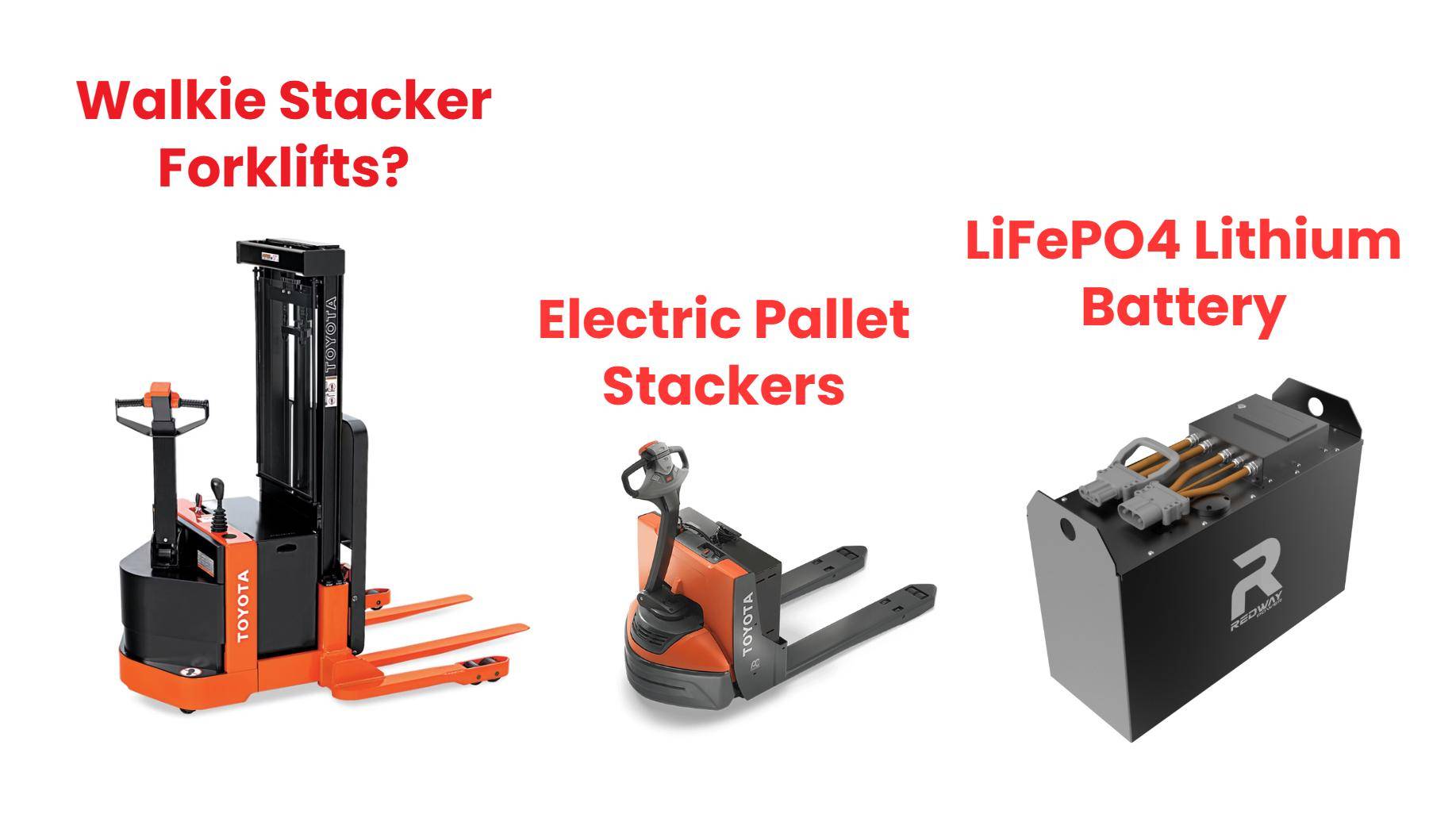
Blog
What Are Electric Pallet Stackers and Walkie Stacker Forklifts?

Electric pallet stackers and walkie stacker forklifts are battery-powered material handling equipment designed for lifting, moving, and stacking pallets in warehouses and industrial settings. They optimize efficiency, reduce manual labor, and enhance safety. Electric models are eco-friendly, cost-effective, and ideal for indoor use due to zero emissions and quieter operation compared to internal combustion alternatives.
LiFePO4 Forklift Batteries OEM Manufacturer
How Do Electric Pallet Stackers Work?
Electric pallet stackers use a combination of hydraulic systems and electric motors to lift loads. Operators control the machine via a handle with buttons for lifting, lowering, and maneuvering. The walkie stacker variant requires the operator to walk behind the equipment, while rider models allow seated operation. Both types prioritize ergonomics and precision in tight spaces.
Advanced models feature regenerative braking systems that recharge the battery during deceleration, extending operational uptime. The hydraulic pump, powered by the electric motor, generates pressure to raise the mast smoothly. Load stability is ensured through tilt sensors and automatic speed reduction when carrying heavy weights. For example, a typical 2,000 lb capacity stacker can lift pallets up to 20 feet in 30 seconds with minimal noise—a critical advantage in temperature-controlled warehouses where engine fumes are prohibited. Many units also include adjustable fork widths (18″-48″) to accommodate diverse pallet sizes and optional attachments like carton clamps for specialized tasks.
| Feature | Walkie Stacker | Rider Model |
|---|---|---|
| Operator Position | Walking | Seated |
| Max Lift Height | 15 ft | 25 ft |
| Ideal For | Short shifts | High-volume operations |
What Are the Key Benefits of Electric Walkie Stackers?
Electric walkie stackers reduce physical strain, improve productivity, and minimize carbon footprints. Benefits include lower operational costs (no fuel expenses), compact designs for narrow aisles, and compliance with indoor air quality standards. Their intuitive controls and safety features, such as automatic braking and load sensors, also reduce accident risks.
How to Choose the Right Electric Stacker for Your Needs?
Consider load capacity, lift height, aisle width, and battery life. Evaluate voltage requirements (24V or 48V) and charging time. Test maneuverability in your workspace and opt for models with adjustable forks or optional attachments. Budget for long-term costs like battery replacements and warranty coverage.
Start by analyzing your daily throughput—a facility moving 500 pallets daily needs a 48V system with 8-hour runtime, whereas low-volume operations may suffice with 24V. Check floor conditions: polyurethane tires work best on smooth surfaces, while cushion tires handle minor debris. For cold storage (-20°F), ensure the stacker has cold-rated hydraulics and insulated wiring. Compare service networks—brands with local technicians reduce downtime. Finally, review energy consumption metrics; lithium-ion models use 30% less electricity than lead-acid alternatives over a 5-year period.
| Battery Type | Lifespan | Recharge Time |
|---|---|---|
| Lead-Acid | 1,200 cycles | 8-10 hours |
| Lithium-Ion | 3,000 cycles | 2-3 hours |
“Electric pallet stackers are revolutionizing warehouse efficiency,” says a Redway logistics expert. “Their adaptability in automated environments and reduced energy costs make them indispensable. Companies investing in lithium-ion models see a 30% faster ROI due to lower maintenance and longer battery cycles. Integrating telematics further bridges the gap between manual and fully automated operations.”
FAQ
- How long do electric pallet stacker batteries last?
- Batteries typically last 5–8 hours per charge, depending on load weight and usage frequency. Lithium-ion models offer faster charging and longer lifespans (up to 2,000 cycles) compared to lead-acid.
- Can walkie stackers handle uneven surfaces?
- Most are designed for flat, indoor surfaces. Outdoor models with pneumatic tires and higher ground clearance are available but less common.
- Are electric stackers suitable for heavy loads?
- Yes. High-capacity models can lift up to 4,000 lbs, though standard versions average 2,000–3,000 lbs. Always check the manufacturer’s rated capacity.



